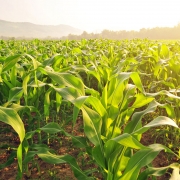EPA Shares Data on Chitosan Salts for Public Comment
This original post was published on May 6, 2022. Click here for more information.
Today, in support of transparency and sound science, the U.S. Environmental Protection Agency (EPA) is making available for comment two aquatic toxicity reports related to the ongoing rulemaking in response to a petition to add chitosan to the minimum risk pesticide exemption list. The purpose of the exemption list is to eliminate the need for the Agency to expend significant resources to regulate products deemed to be of minimum risk to human health and the environment. Products that contain only those active and inert ingredients allowed by the exemption and meet certain Federal Insecticide, Fungicide and Rodenticide Act (FIFRA) requirements are exempt from the normal FIFRA registration requirements. Approximately a decade has passed since a substance was added to the list of ingredients eligible for the minimum risk pesticide exemption.
Chitosan is a naturally occurring substance found in the cell walls of all crustaceans, most fungi, and the exoskeletons of most insects. It is currently registered with EPA under FIFRA as a fungicide, antimicrobial agent, and plant growth regulator that boosts the ability of plants to defend against fungal infections. Chitosan is currently widely available to the public for non-pesticidal uses, and has established applications in various industries including textiles, cosmetics, beverage processing, and water treatment.
On October 10, 2018, EPA received a petition from Tidal Vision Products, LLC requesting that chitosan be added to the list of active ingredients allowed in exempted minimum risk pesticide products. In November 2020, EPA requested comments from the public on a proposed rule to add chitosan to the list of active ingredients eligible for the exemption. The public comments received on the proposal expressed concerns regarding derivatives of chitosan that are likely to be produced when chitosan is mixed with certain acids and on the potential hazard for aquatic organisms exposed to chitosan salts.
In November 2021, EPA requested additional information from the petitioner on chitosan salts and their potential effect on the environment and, in response, received two aquatic toxicity reports. Because these reports were not available when the rule was proposed, EPA is now seeking public input on how the reports may be used to inform the Agency’s assessment of the aquatic toxicity of chitosan and its salts.Stakeholders are invited to submit any questions, comments, and concerns related to these reports so EPA may consider them before deciding whether to add chitosan to the minimum risk exemption.
The public comment period will be open for 30 days in docket EPA-HQ-OPP-2019-0701 at www.regulations.gov, starting May 6, 2022.




